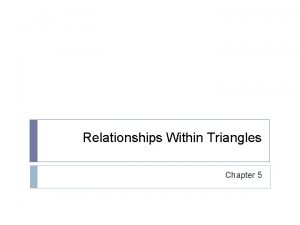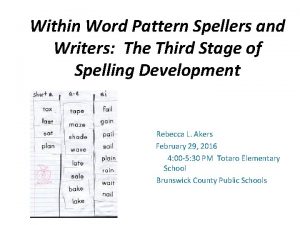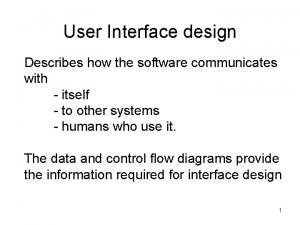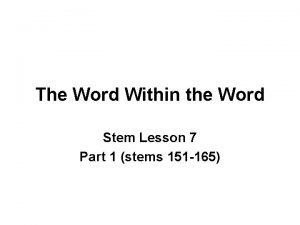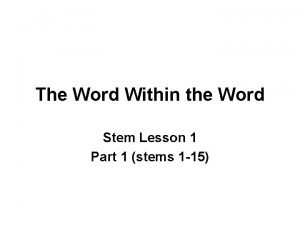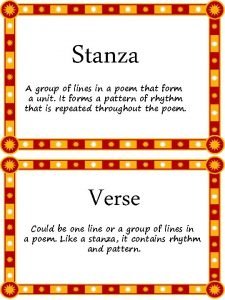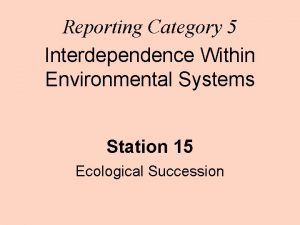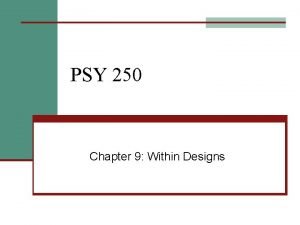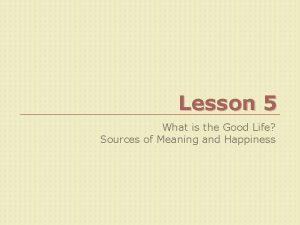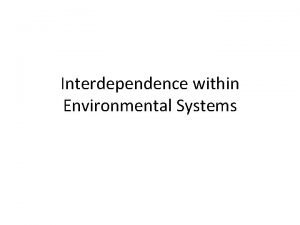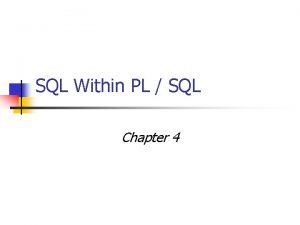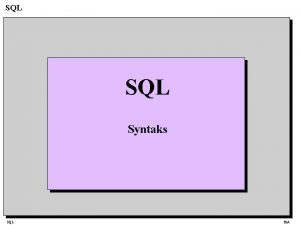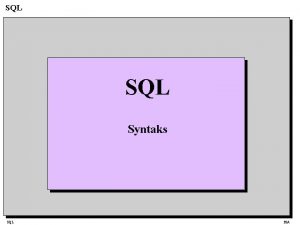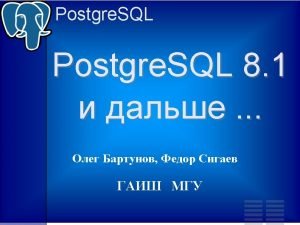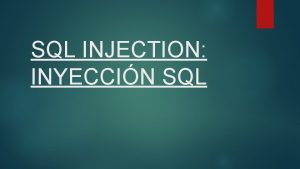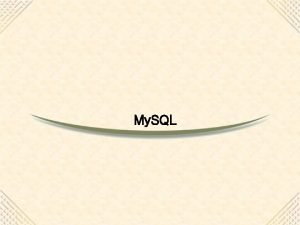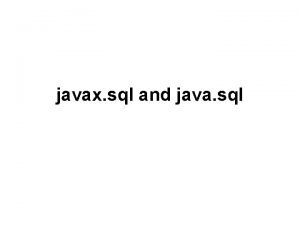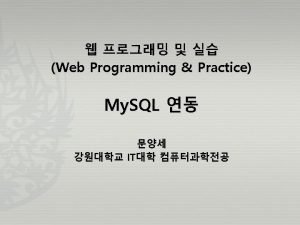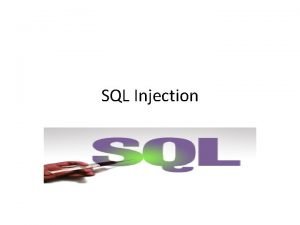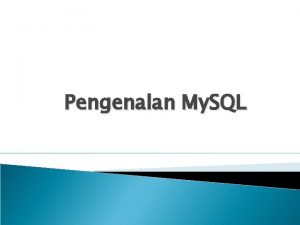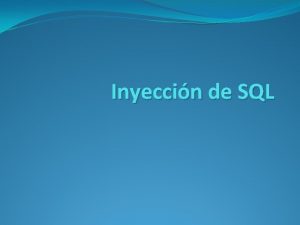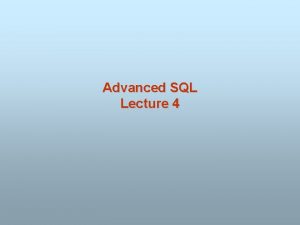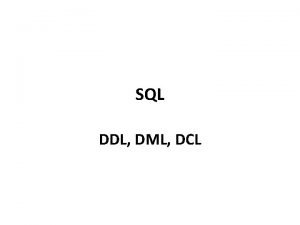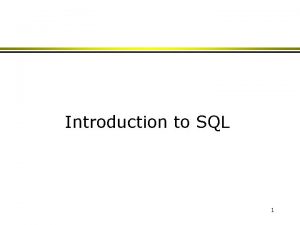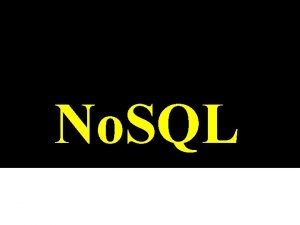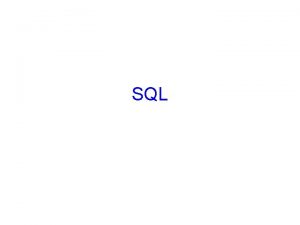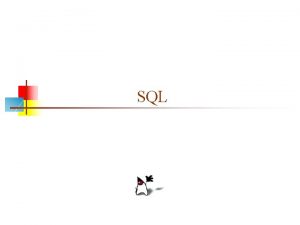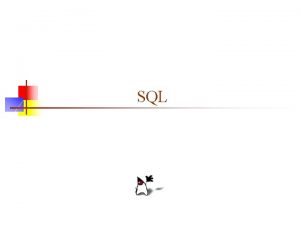SQL Within PL SQL Chapter 4 SQL Within








![DML in PL / SQL Insert Syntax INSERT INTO table_reference [(column_names)] {VALUES (expression) | DML in PL / SQL Insert Syntax INSERT INTO table_reference [(column_names)] {VALUES (expression) |](https://slidetodoc.com/presentation_image_h/c939999bfc957f0a431e8ada693f22f5/image-9.jpg)




















- Slides: 29

SQL Within PL / SQL Chapter 4

SQL Within PL / SQL n n SQL Statements DML in PL / SQL Pseudocolums Transaction Control 2

SQL Statements Using SQL in PL / SQL n The only SQL statements allowed in PL/SQL are: n n n DML (data manipulation language) transaction control DDL (data definition language) statements are not permitted 3

SQL Statements DML in PL / SQL n The DML statements permitted are: n n Select Insert Update Delete 4

DML in PL / SQL Select n SELECT statement in PL/SQL retrieves data from a database table into: n n PL/SQL record set of PL/SQL variables Using SELECT in PL/SQL should only return one row When you need to retrieve more than one row from a table use a cursor 5

DML in PL / SQL Select Syntax SELECT { * | select_list_item } INTO { PL/SQL_record | variables} FROM table_reference WHERE where_clause n n n each variable must be compatible with its associated select list item count of variables must be same as number of items in list record should contain fields that correspond to the select list in type and count 6

select. sql DECLARE v_Student. Record students%ROWTYPE; v_Department classes. department%TYPE; v_Course classes. course%TYPE; BEGIN SELECT * INTO v_Student. Record FROM students WHERE id = 10000; SELECT department, course INTO v_Department, v_Course FROM classes WHERE room_id = 99997; END; 7

DML in PL / SQL Insert n n The INSERT statement inserts data into a database table There are two variations of the INSERT command n n add one row to a table using the specified VALUES list add one or several rows when the insert command uses a SELECT statement 8
![DML in PL SQL Insert Syntax INSERT INTO tablereference columnnames VALUES expression DML in PL / SQL Insert Syntax INSERT INTO table_reference [(column_names)] {VALUES (expression) |](https://slidetodoc.com/presentation_image_h/c939999bfc957f0a431e8ada693f22f5/image-9.jpg)
DML in PL / SQL Insert Syntax INSERT INTO table_reference [(column_names)] {VALUES (expression) | select_statement} n use column names when the values n n n are listed in a different order than as defined during table creation Only a portion of the columns of the table are used during insert table definition remains unchanged after the new row is inserted 9

DML in PL / SQL Insert n n The word VALUES must precede the list of data to be inserted Regarding the values in the list: n n n a character string must be in single quotes numbers can stand by themselves dates must be in single quotes n n In the default Oracle date format Converted using TO_DATE function (this is the suggested method) 10

Insert Using Built-in Functions § You can modify the contents of the values before they are entered into a column of a table § § § by a VALUES list from a SELECT statement Use any of the built-in functions supported by PL/SQL § § character date functions numeric conversion 11

insert. sql DECLARE v_Student. ID students. id%TYPE; BEGIN SELECT student_sequence. NEXTVAL INTO v_Student. ID FROM dual; INSERT INTO students (id, first_name, last_name) VALUES (v_Student. ID, 'Timothy', 'Taller'); INSERT INTO students (id, first_name, last_name) VALUES (student_sequence. NEXTVAL, 'Patrick', 'Poll'); END; 12

DML in PL / SQL Insert with Select n n It is also possible to insert rows into a table using the results of a SELECT statement The results of a SELECT statement n n can return one or several rows based on the WHERE clause can be a mix of columns from one or more tables 13

DML in PL / SQL Update n n n Requires setting specific values for each column you wish to change Specifying which row or rows to modify using a WHERE clause You can use built-in functions in setting a value for the update 14

Update in PL / SQL Embedded SELECT n It is possible to set values in an UPDATE by embedding a SELECT statement right in the middle of it n n n SELECT has its own WHERE clause UPDATE has its own WHERE clause to affect the rows You must be certain that the SELECT will return no more than one row 15

Embedded SELECT BEGIN UPDATE comfort set Midnight = (SELECT temperature FROM weather WHERE city = ‘MANCHESTER’) WHERE city = ‘WALPOLE’ AND Sample. Date = TO_DATE (’ 22 -DEC-1999’, ‘DD-MON-YYYY’); END; 16

DML in PL / SQL Delete n n n Removing a row or rows from a table WHERE clause is necessary to removing only the rows you intend DELETE without the where clause will delete all of the rows of a table 17

delete. sql DECLARE v_Student. Cutoff NUMBER; BEGIN v_Student. Cutoff : = 10; DELETE FROM classes WHERE current_students < v_Student. Cutoff; DELETE FROM students WHERE current_credits = 0 AND major = 'Economics'; END; 18

DML in PL / SQL Truncate n Another command for deleting records from a table is the TRUNCATE command TRUNCATE TABLE students; n Does not operate the same as DELETE n n n deletes all rows from a table cannot be rolled back records are unrecoverable does not run any DELETE triggers does not record any information in a snapshot log 19

DML in PL / SQL WHERE Clause n n The SELECT, UPDATE, and DELETE statements all include the WHERE clause Defines the active set (set of rows): n n returned by a SELECT query Acted upon by an UPDATE or DELETE Consists of conditions, joined together by the boolean operators AND, OR, and NOT Conditions usually take the form of comparisons using the relational operators (such as: =, <>, >, >=, <, <=) 20

DML in PL / SQL WHERE Clause with Cursor n The UPDATE, and DELETE statements both include a WHERE clause with a special syntax n n the WHERE CURRENT OF is used with a cursor definition often processing done in a fetch loop modifies the rows that have been retrieved by a cursor 21

DML in PL / SQL WHERE Clause with Cursor n This method consists of two parts: n n the FOR UPDATE clause in the cursor declaration the WHERE CURRENT OF clause in an UPDATE or DELETE statement 22

forupdat. sql DECLARE v_Num. Credits classes. num_credits%TYPE; CURSOR c_Registered. Students IS SELECT * FROM students WHERE id IN (SELECT student_id FROM registered_students WHERE department= 'HIS' AND course = 101) FOR UPDATE OF current_credits; 23

forupdat. sql (cont. ) BEGIN FOR v_Student. Info IN c_Registered. Students LOOP SELECT num_credits INTO v_Num. Credits FROM classes WHERE department = 'HIS' AND course = 101; UPDATE students SET current_credits = current_credits + v_Num. Credits WHERE CURRENT OF c_Registered. Students; END LOOP; COMMIT; END; 24

DML in PL / SQL Synonyms n It is possible to create a synonym for a: n n table view sequence stored n n n procedure function package 25

DML in PL / SQL Synonyms n The syntax for creating a synonym is: CREATE SYNONYM synonym_name FOR reference; n Where: n n Synonyms synonym_name – name of your synonym reference – schema object being referenced 26

CREATE SYNONYM: Examples n n To define the synonym office for the table in the schema hr CREATE SYNONYM office FOR hr. location 27

Pseudocolums Currval and Nextval n n n CURRVAL and NEXTVAL are used with sequences A sequence is an Oracle object used to generate unique numbers Once created, you can access it with its name by: n n sequence. CURRVAL sequence. NEXTVAL 28

Pseudocolums Currval and Nextval n Sequence values can be used in: n n SELECT list of a query VALUES clause of an INSERT SET clause of an UPDATE Sequence values cannot be used in: n n WHERE clause PL/SQL statement 29
 Difference between pl/sql and sql
Difference between pl/sql and sql Pl sql unit testing
Pl sql unit testing Relationships within triangles
Relationships within triangles Relationships within triangles
Relationships within triangles Within word pattern
Within word pattern Within subject
Within subject Describes how a software communicates within itself.
Describes how a software communicates within itself. Within subjects vs between subjects
Within subjects vs between subjects Urb stem meaning
Urb stem meaning Lesson 1
Lesson 1 Word within the word list 12
Word within the word list 12 Rhythm definition photography
Rhythm definition photography What is a stanza in a poem
What is a stanza in a poem What is the first rule in social correspondence?
What is the first rule in social correspondence? What is shaping
What is shaping Interdependence within environmental systems
Interdependence within environmental systems Category 5 interdependence within environmental systems
Category 5 interdependence within environmental systems Reverse counterbalancing
Reverse counterbalancing Between subject and within subject
Between subject and within subject These are services delivered by a valet except
These are services delivered by a valet except It refers to the focal terminus of fingerprint pattern
It refers to the focal terminus of fingerprint pattern Frozen meat market form
Frozen meat market form The good life
The good life Communication with oneself
Communication with oneself Interdependence within environmental systems
Interdependence within environmental systems Within group variance vs between group
Within group variance vs between group Interactions within ecosystems grade 7
Interactions within ecosystems grade 7 Film crew hierarchy
Film crew hierarchy Mixed factorial design
Mixed factorial design Between-subjects design vs within
Between-subjects design vs within



